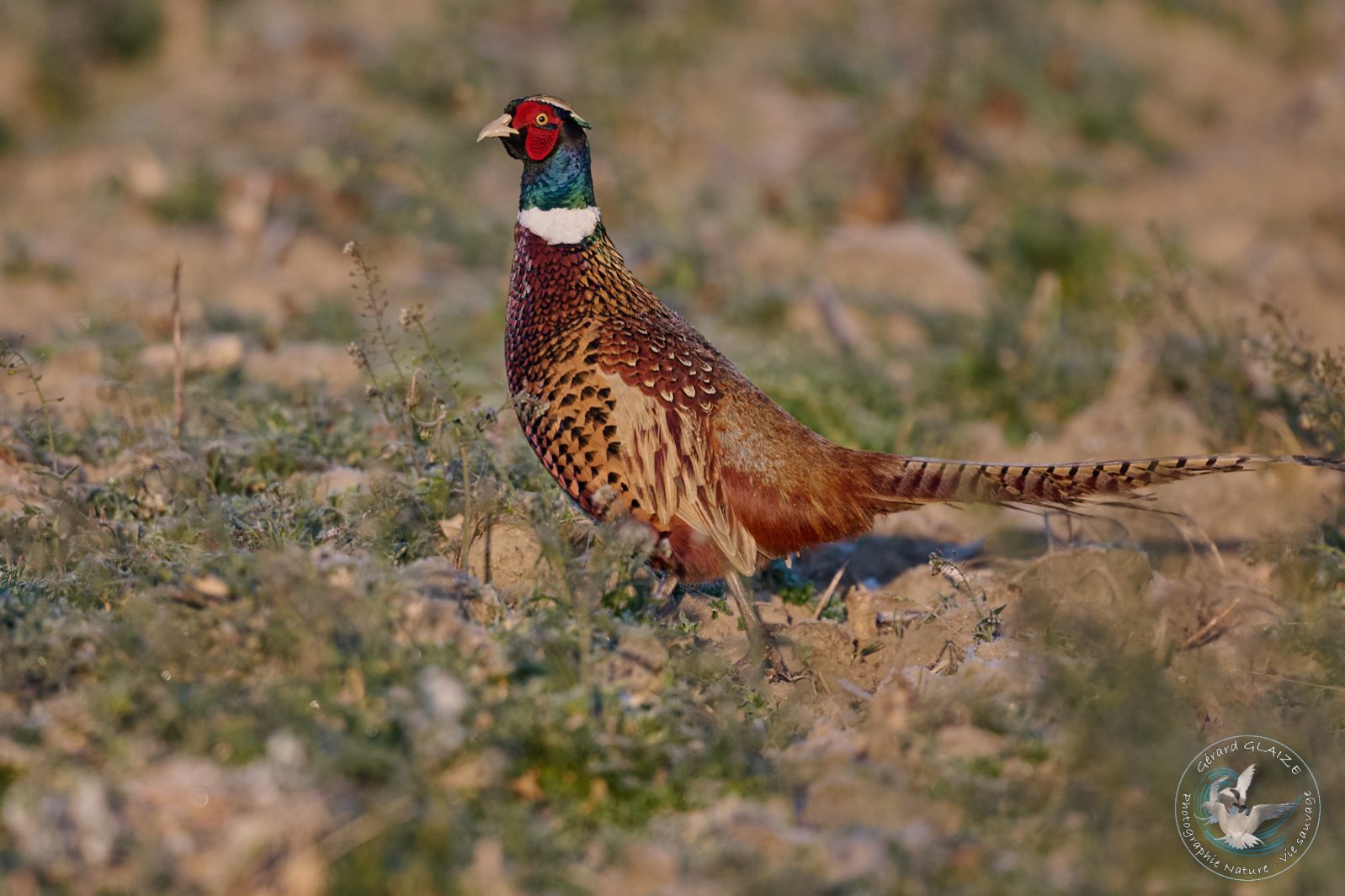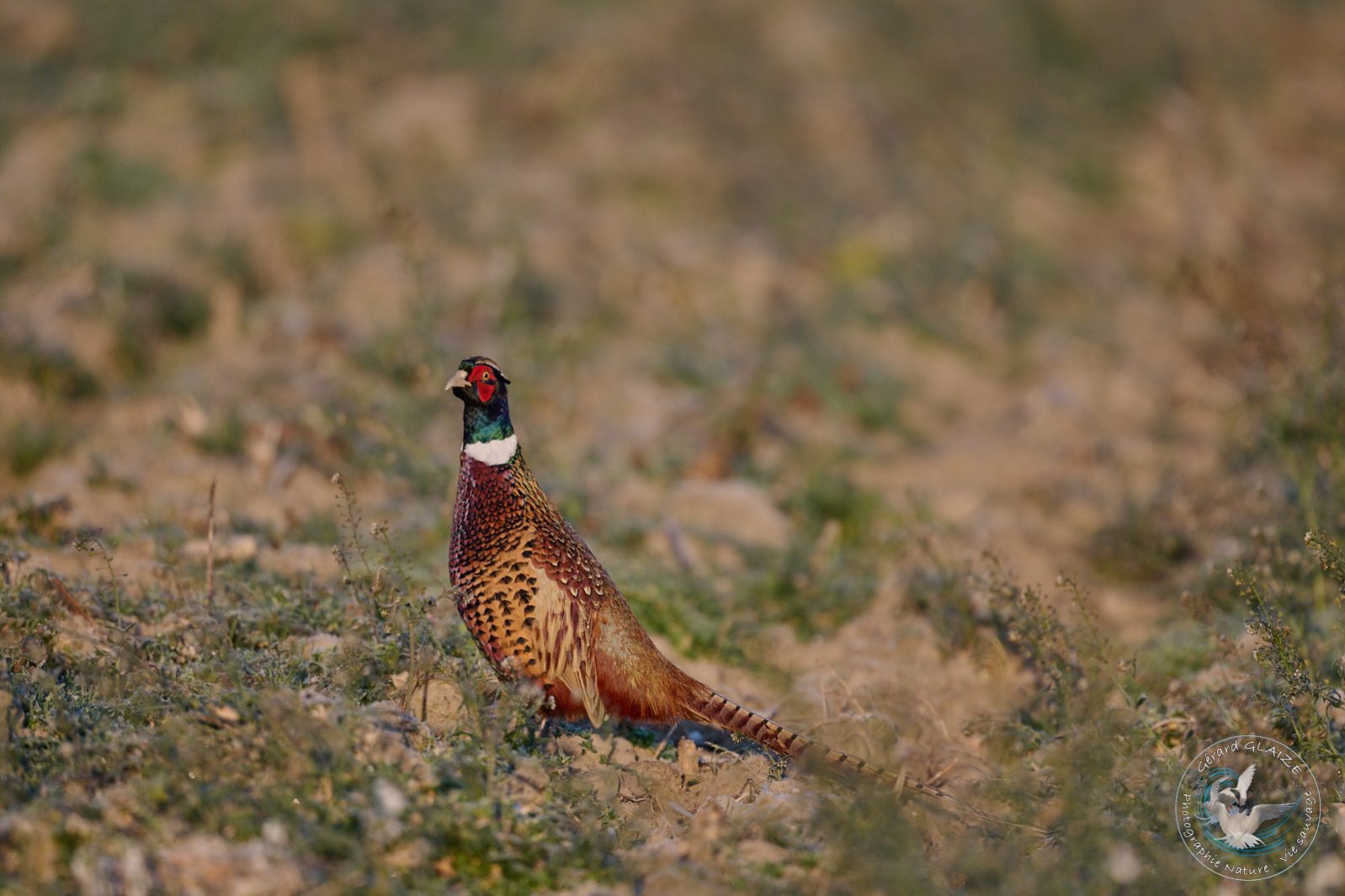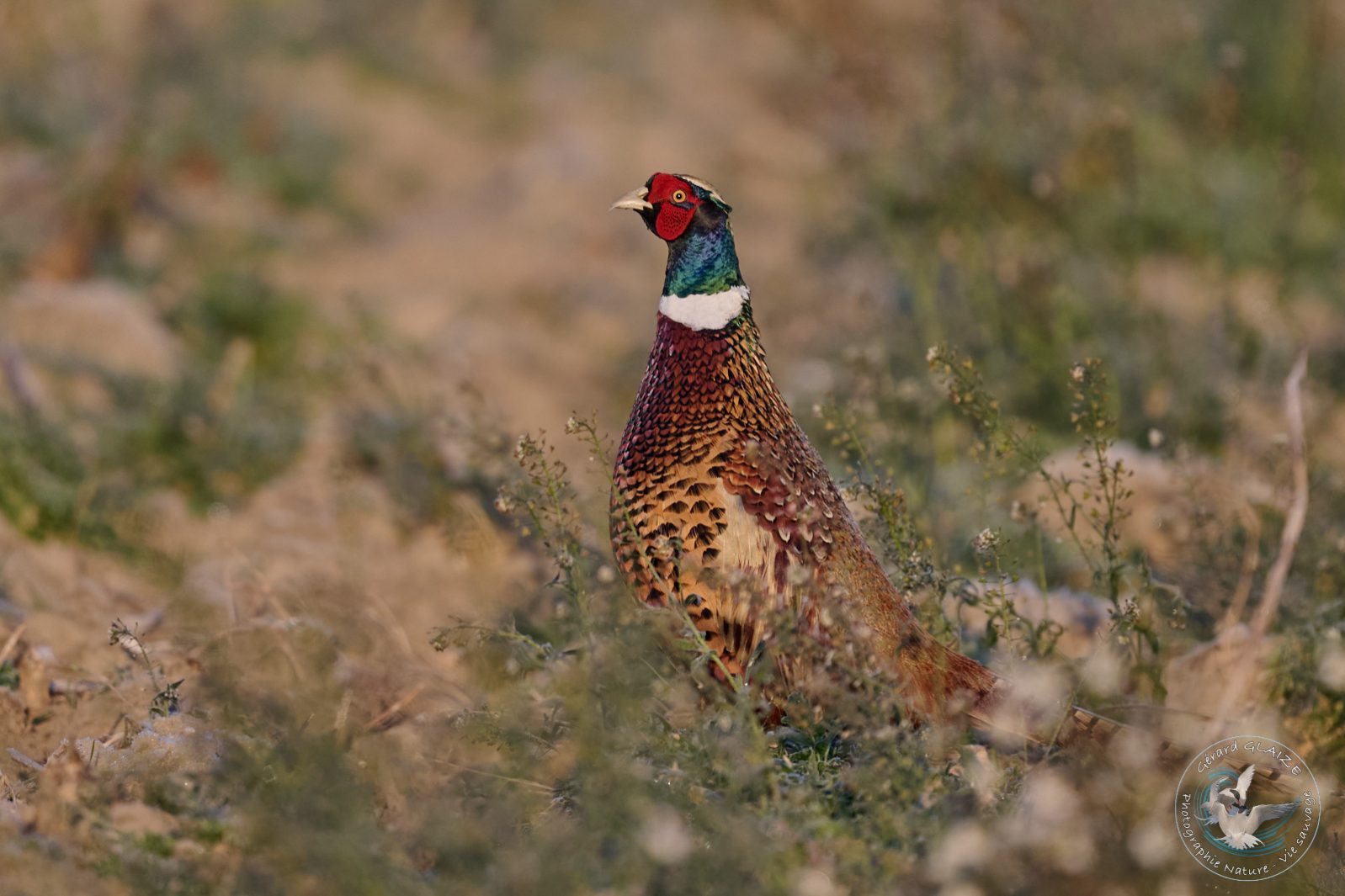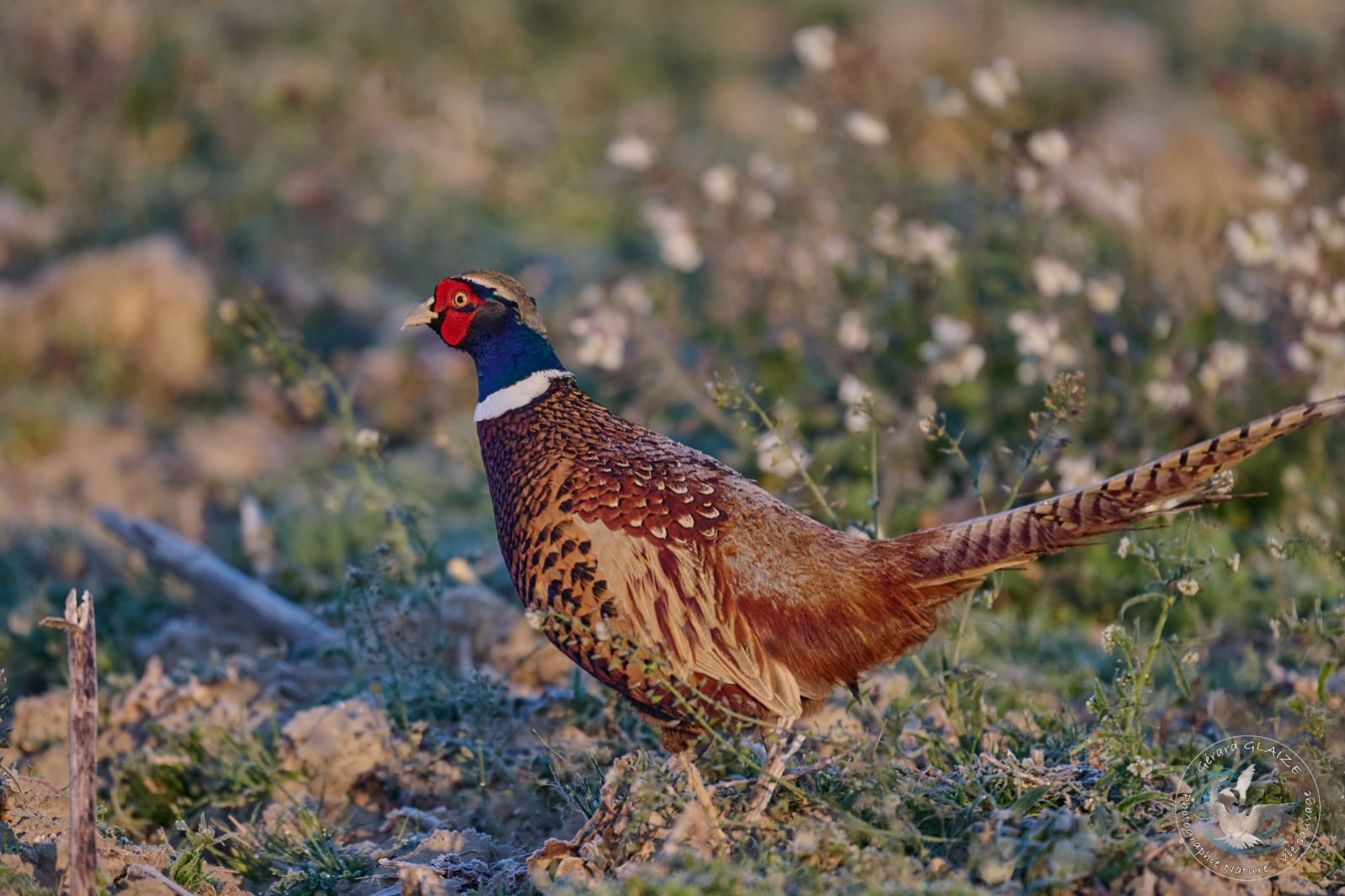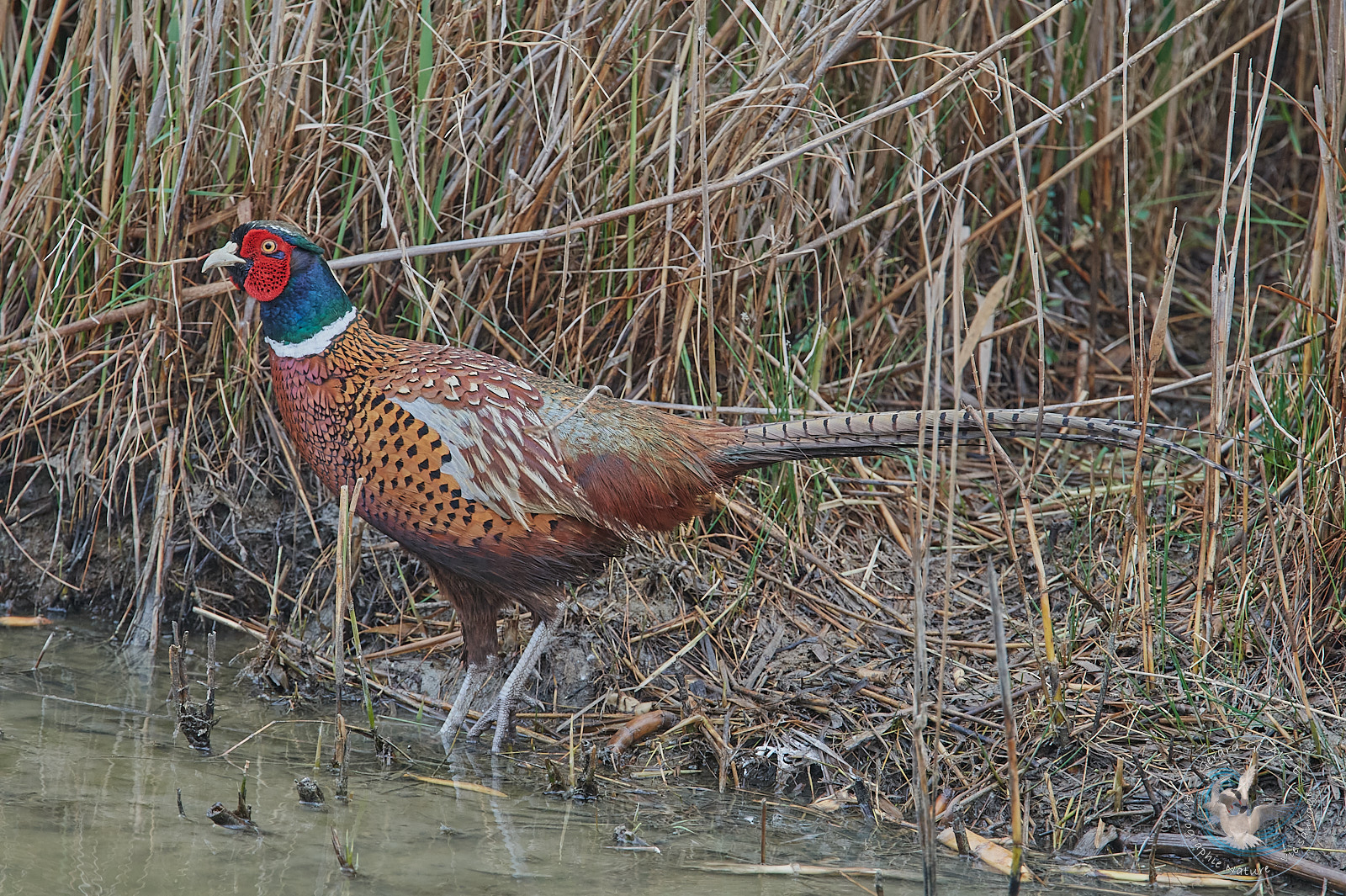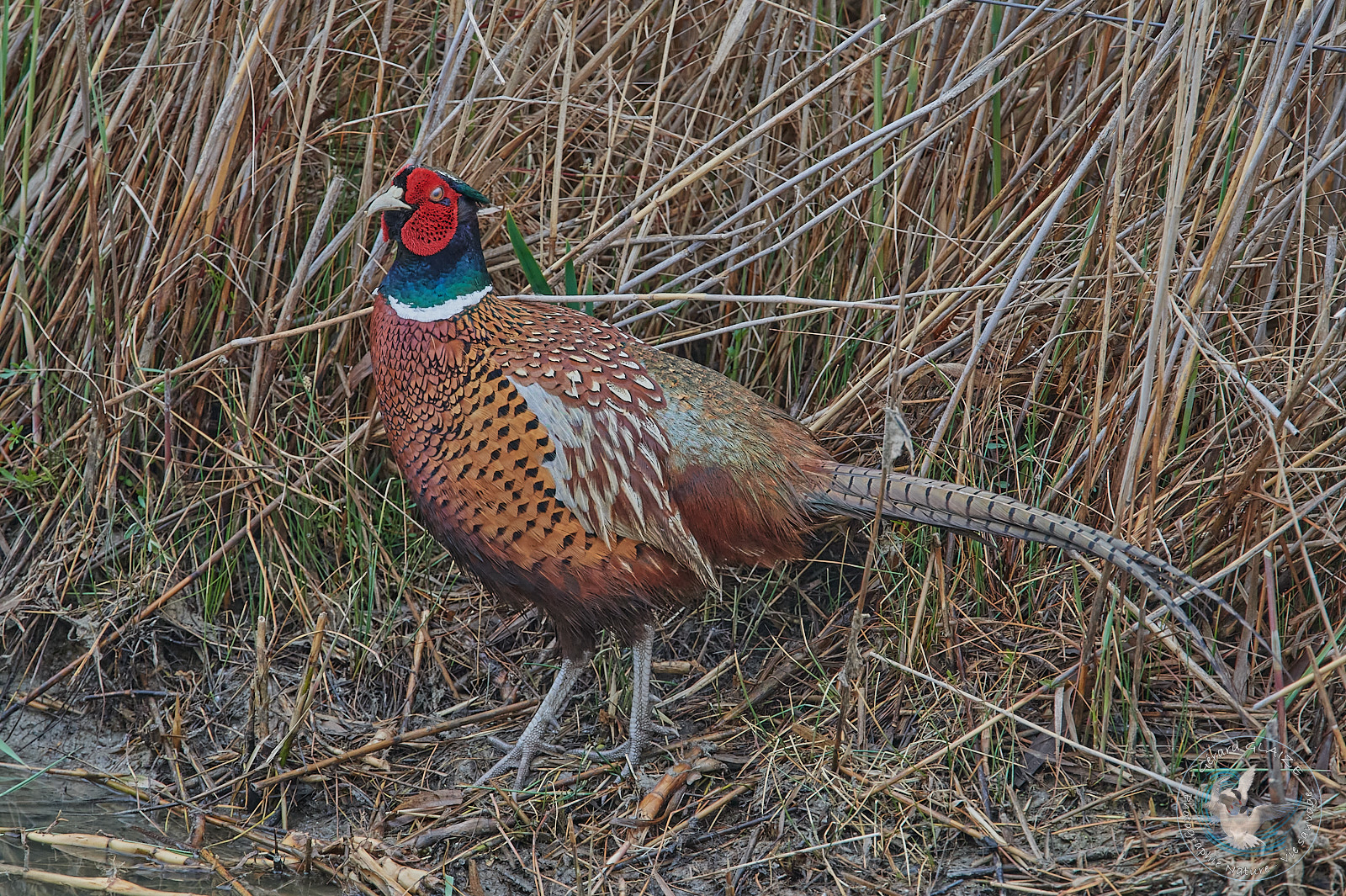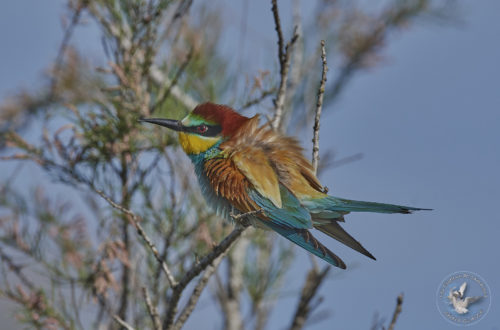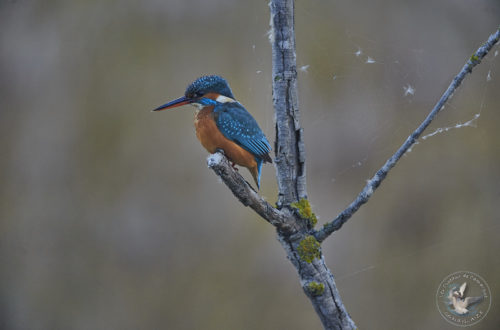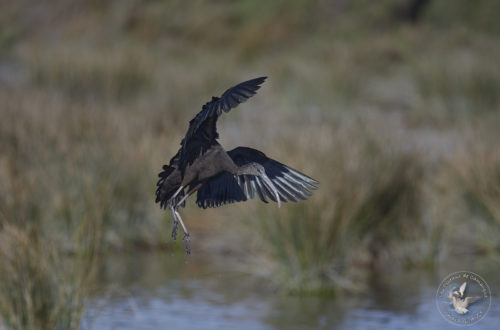Common Pheasant
Common Pheasant, or Ring-necked Pheasant, is a species of galliform bird in the Phasianidae family, native to Asia and introduced to Europe in the Middle Ages. It is the most common pheasant in Europe, and if the term is used alone, it is probably this species that is referred to. It is hunted as game and farmed for its meat.
The male displays bright colors and has a tail with extremely long rectrices. Body is all shades of warm colors ranging from reddish beige to dark chestnut through to golden hues of the most beautiful effect. The overall appearance in the field is reddish brown. Finally, many covert feathers are edged or tipped with light on the upperside, dark brown or black on the sides and underside, which breaks the uniformity of the plumage.
The head is blue or green depending on the light, with bright reflections, and often highlighted with a white collar. In addition, it has around the golden eye a bright red area of bare skin that develops into wattles with age. Tufts of dark green feathers stand up towards the back above the auricular area, forming like small “ears”. The crown is pale. The beak, strong and slightly hooked, is horn-colored.
Females and juveniles also have long tails but their discreet livery is light brown.
Common Pheasant
Scientific name : Phasianus colchicus
Family : Phasianidae
Length. from 53 cm to 89 cm – Wingspan from 70 cm to 90 cm
Weight : from 900 gr to 1.050 gr
IUCN Conservation Status : LC
Flight
Common Pheasant, or Ring-necked Pheasant, has a powerful, fast, and direct flight. The bird generally flies short distances. However, due to the disproportion between the bird’s heavy weight and its small wing area, flight cannot be sustained for very long. The short, rounded wings and long, pointed tail give it a distinctive silhouette. The flight is very noisy.
Habitat
Common Pheasant thrives in a wide variety of environments, both in the plains and in the mountains, locally up to 3,000 m above sea level. It is even suitable for agricultural areas, provided that farming practices are not too intensive and the environment is not too simplified or artificialized. However, it avoids dense forest environments, arid zones, and very high mountains.
Regime – Diet
Common Pheasants feed on seeds, insects, berries, worms, and mollusks. The ring-necked pheasant also has a strong beak and powerful feet with four well-armed claws, adapted for the scratching required to search for food in the ground.
Nesting
The male is polygamous. Furthermore, his beautiful plumage attracts females, and there can be up to 18 in a single harem. The breeding season lasts from March to April. During this period, the male displays by raising his body while beating his wings and spreading them like a fan. Finally, after mating, he abandons the female. After this, she digs a shallow, scraped depression in the ground, lined with twigs, grasses, and rootlets. Leaves and grasses line the nest. It is generally well hidden in the vegetation, which gives it the appearance of a dome. She will lay 8 to 14 olive-brown eggs, which she will incubate for approximately 22 to 25 days.
The chicks are precocial, leaving the nest immediately after hatching. They are capable of short flights at 12 to 14 days of age, but are dependent on insect food for the first two weeks of life. They fledge at 8 to 11 weeks of age.
This species produces a single brood per season.
Protection
Common Pheasant is the most widespread and common pheasant in the world. Millions of birds are raised each year in Europe and North America to provide game for hunters.
Cry
The territorial call is a powerful “hraah hraah” of a fairly high pitch, harsh and raspy, uttered with the head pointed upwards and then accompanied by a loud double beat of the wings. But the alarm call is a series of bisyllabic notes cackling “kutuk kutuk kutuk…”


